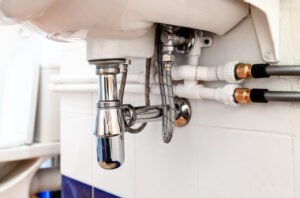
Blog
How to Unblock Outdoor Drains: A Comprehensive Guide
Blocked outdoor drains can be a nuisance, causing water to pool and potentially leading to unpleasant odors and even property damage. Fortunately, unblocking an outdoor drain is a task you can often handle yourself with the right tools and techniques.
Here’s a detailed guide to help you get your drains flowing freely again.
How to Unblock Outdoor Drains?
Unblocking outdoor drains is an essential task to prevent waterlogging and maintain proper drainage around your property. Over time, leaves, dirt, and other debris can accumulate in the drains, causing blockages that can lead to flooding and damage. The process of unblocking involves identifying the blockage, using tools like drain rods or a pressure washer to clear the debris, and ensuring the drain is free flowing. Regular maintenance and timely intervention can save you from more significant issues and keep your outdoor spaces functional and safe.
Identify the Problem
Before you start, it’s important to identify the cause of the blockage. Common culprits include:
- Leaves and debris: Fallen leaves, twigs, and other garden debris can accumulate and block the drain.
- Mud and silt: Over time, mud and silt can build up, especially after heavy rains.
- Grease and fat: If your outdoor drain is connected to your kitchen, grease and fat can solidify and cause blockages.
- Foreign objects: Sometimes, objects like toys or stones can accidentally find their way into the drain.
Gather Your Tools
You’ll need a few basic tools to get started:
- Rubber gloves
- Screwdriver (to remove the drain cover)
- Drain rods or a plumbing snake
- Bucket
- Boiling water
- Baking soda and vinegar
- Bleach (optional)
- Garden hose
Remove the Drain Cover
Start by removing the drain cover. Use a screwdriver to lift it off. If the cover is heavy or stuck, you might need a grate hook or a similar tool to pry it open.
Clear Visible Debris
Put on your rubber gloves and manually remove any visible debris from the drain. This includes leaves, twigs, and any other large objects that might be blocking the flow of water. Dispose of the debris in a trash bag.
Use a Drain Rod or Plumbing Snake
For blockages that are deeper in the drain, use a drain rod or plumbing snake. Insert the rod into the drain and push it through the blockage. Rotate the rod to break up the clog and then pull it out. Repeat this process until you’ve cleared the blockage.
Flush the Drain
Once you’ve removed the blockage, flush the drain with boiling water. This helps to dissolve any remaining grease or fat. For a more thorough clean, you can use a mixture of baking soda and vinegar:
- Pour half a cup of baking soda down the drain.
- Follow with half a cup of vinegar.
- Let the mixture sit for about 30 minutes.
- Flush with boiling water.
Use Bleach for Sanitization (Optional)
If you want to ensure the drain is sanitized, you can pour a small amount of bleach down the drain. Be sure to follow the manufacturer’s instructions and use bleach sparingly, as it can be harsh on pipes and the environment.
Prevent Future Blockages
To prevent future blockages, consider the following tips:
- Regular cleaning: Periodically remove debris from the drain cover and flush the drain with boiling water.
- Install a drain guard: A drain guard can help catch leaves and other debris before they enter the drain.
- Avoid pouring grease down the drain: Dispose of grease and fat in the trash rather than down the drain.
- Regular maintenance: Schedule regular maintenance checks to ensure your drains are clear and functioning properly.
Conclusion
Unblocking an outdoor drain is a manageable task with the right approach and tools. By following these steps, you can keep your drains clear and prevent future blockages. Regular maintenance and preventive measures will help ensure your outdoor drains remain free-flowing and efficient
Most Popular

How to Connect Pipes Under a Sink: A Comprehensive Guide
Blog Connecting pipes under a sink might seem like a daunting task, but with the right tools and a bit

How to Unblock Outdoor Drains: A Comprehensive Guide
Blog Blocked outdoor drains can be a nuisance, causing water to pool and potentially leading to unpleasant odors and even

How to Stop a Running Toilet: A Comprehensive Guide
Blog A running toilet can be more than just an annoying sound in your home; it can also lead to

